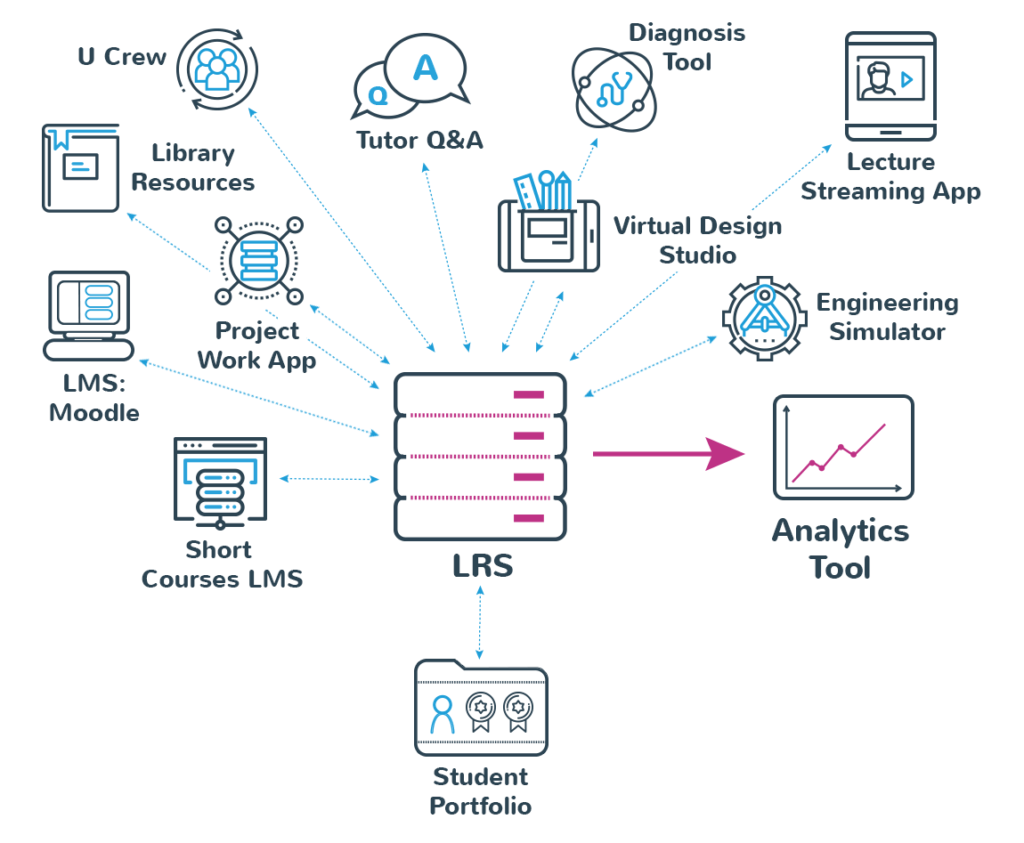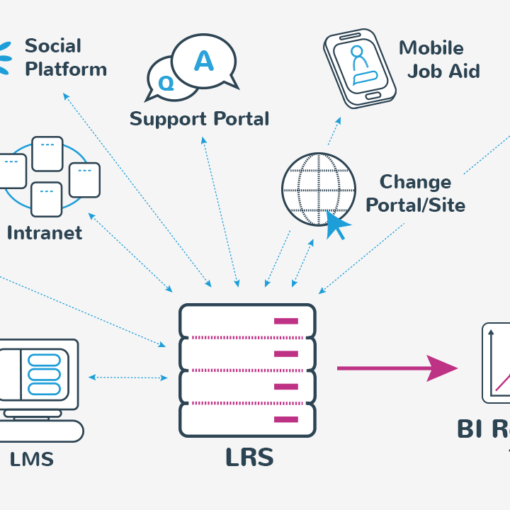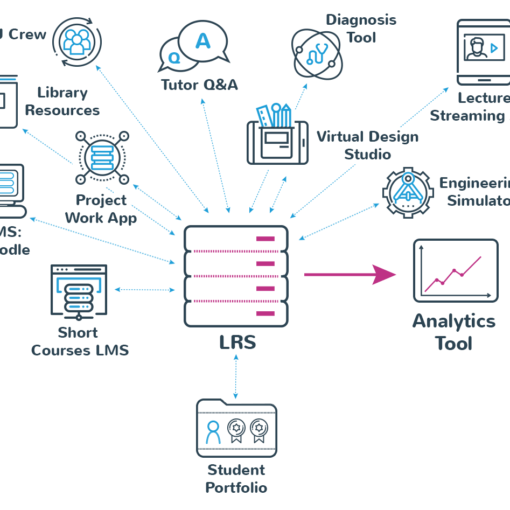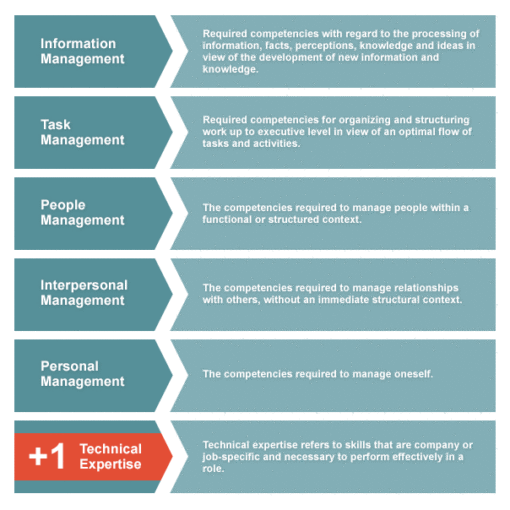We’ve all heard the innovation adage, “think outside the box”. It’s a cliché about breaking the paradigm of your thinking, but it also serves well as a metaphor if the box is your learning management system (LMS). Most organisations I have worked with try only to advance their learning innovation within the boundaries that their LMS sets. The latest and greatest learning experience is generally bound by the feature set the LMS supports. Learning designers are told to “get creative, just don’t break out of that box that is our LMS capabilities”. Every now and then, a project might start with a courageous sponsor trying to “do something different” but invariably they don’t have the organisational clout, stamina, or budget to beat down those walls. As learning vendors we are constantly pushing the capabilities of our clients’ LMS to the edge in the pursuit of innovation and more effective learning, but increasingly we are coming up against limitations that mean significant sacrifices need to be made, leading to sub optimal learner experiences, journeys and outcomes. Our clients and their learners are becoming more sophisticated in their needs, and their LMS is holding us and them back. In the 17 years I’ve worked in learning, I’m yet to meet a client who loves their LMS. I’m not even sure if I’ve met anyone that likes their LMS. People seem to either tolerate or hate them. Administrators don’t like them because they could never live up to their long, ever-growing list of feature requests to make their day-to-day life easier. Learners hate them because they are a place they must go to be compliant.
So why are we letting the LMS set the innovation agenda (and boundaries) within our organisations?
To their credit, I do see LMS vendors on a quest to innovate. They create engagement features like leaderboards and badges to bring the learners in, like honey for the bears. These, of course, are not necessarily bad techniques when used appropriately, sparingly, and in the right way. But I’ve become increasingly sure that these techniques work best within the learning experience itself, not when implemented as quick fixes around existing content.
“So all I need to do is take my same old-style content and stick it on my new fancy LMS with a leaderboard and some badges and – BINGO! Learning engagement magic will happen.”
The thing is, learners are not stupid. They know when you are trying to “put lipstick on a pig”. You can’t innovate around the content or learning experience, you have to innovate within it and provide fit for purpose learning experiences.
The problem with letting an LMS provider lead your learning innovation agenda is that:
- they have a business to protect so they need to uphold the paradigm that the LMS is the all seeing all knowing centre of the learning universe. They want to create “stickiness” so their customer can’t leave.
- they generally don’t care about the learning experience at the micro level. They see learning simply as a file that must be uploaded, redelivered to the right people and tracked. As if what happens between opening and completing an eLearning experience (be it interactive, a video or a pdf) is merely secondary to the real problem – delivery and completion rates!
- in their quest to innovate they have become complex beasts that are cumbersome and difficult to use. They add more social features, new ways of learning, new integrations, new ways to do group work, new ways to submit work, new ways to review learner submissions. The feature creep goes on and on and on. As they systems become more complicated, they become more expensive to maintain, clunky and simply overwhelming. As the old adage goes “something for everyone, is for no one”. They have become the learning version of a swiss army knife – they can do many things, and non of them well.
I know this not just because I’ve witnessed it, but because I was part of it. I spent the first half of my career as an LMS product manager. Now that I sit on the other side of the fence as a learning experience producer, I know what we need from learning environments to enable us to innovate and deliver the experiences our clients are really asking for:
1) Data, Data, Data: We Need Data to Make Great Learning
As a learning producer to make the content engaging, personalised and relevant, we need be able to store and access data about the learners and their interactions. Once we can store data, we can track more interactions and adapt the content to the personal needs of the learner. We can also provide the business or faculty with in-depth insights into the capability of the learner. But most learning management systems make it very hard for designers to make their experiences engaging, because they limit the amount of data they can access and store, by using old and outdated eLearning standards like SCORM 1.2, designed to track completion and score. SCORM 1.2 is not sophisticated enough for today’s big data or user experience needs, nor should it be expected to be, it was designed in 1999.
And without data you can’t analyse your learning, make continuous improvements, demonstrate success or provide real time information to facilitators or faculty to help them better engage their people. We need to know what is going on inside our learning experiences so we can properly measure capability and performance, in real time.
2) Decentralise away from your LMS. Great Learning Should Go to the People
The second problem we face is breaking free of the LMS. Sometimes doing learning on an LMS makes sense. In a corporate, or work-integrated context, the LMS is usually designed well for compliance. In an education context they are great at distributing assignments and getting people to do quizzes. However LMSs generally provide a poor learner experience beyond the instructive linear learning mode. And because they are places where people must come to be compliant or submit overdue work, they are generally not places people want to go for non-directed engaging learning. LMSs provide average, one-learning-model-fits-all user experiences and they are associated with the place I go after 15 reminder emails. Hardly inspiring. No leaderboard or badge can make that better. Putting your bottom-up organisational change initiative or your problem based learning initiative on your existing LMS is probably the best way to kill any enthusiasm for it, assuming they don’t give up trying to navigate their way to your program to begin with.
Learning really should be where people want it and need it. For example in a work-integrated environment, putting learning about “how to better service your customers” inside your CRM, where your frontline customer service representatives hang out.
In an education context putting learning in the clinic, in the lab, on a simulator, on social media, in a virtual design studio or on a dedicated lecture streaming app would be more appropriate.
3) Empower Innovation: Fit for Purpose Solutions, User Experiences and Technology
Not all learning needs are created equally. Yet we often try to solve them using the same tool sets, technologies and learner experiences. Sure we “blend” them differently but at the end of the day most clients tend to mix-and-match face-to-face events, SCORM modules, videos, podcasts, documents, quizzes and assessments, bringing them together using the same old course structures on most LMSs. It’s fine if that’s what’s called for, but in many cases it’s just not the kind of seamless user experience people expect. It ties the learning to the LMS and results in the same experience being served up year after year. But most client’s technical environments won’t let us innovate outside this construct, for policy or IT reasons. The learning must always be delivered within the paradigms dictated by the LMS environment and the allowed tool sets. But often the right solution might be a series of learning tools or technologies. In some ways we don’t need an LMS, we need many learning tools connected together. Each doing what they do really well.
For example in the corporate context a job aid, a mobile app, an add-on to an existing application (such as your CRM) or a simple quick access browser plug-in might be the best place to put learning. This is particularly the case as we move towards just-in-time learning and job support and away from formal training structures.
In the education world different technologies for different disciplines is definitely the best approach. Medicine requires very different learning technology tools than IT and engineering. Creative disciplines need better ways to collaborate than an LMS can offer. In education we see these tools creep into the learning environment but often in an unofficial way or using protocols such as LTI. The issue with LTI is that the learning history then resides in the tool itself without giving the institution detailed records of the students performance and history. When the tool goes the history is lost.
It would be far better if we could get the LMS out of the way and let learning be what it needs to be for the problem being solved. Give learning designers the tools and technical environment they need to innovate and deliver the learning experiences and aids that are required – open up opportunities, don’t shut them down with the technical constraints of the LMS. History shows us what providing a well-managed innovation ecosystem can deliver – you need look no further than the powerful combination of the Apple App Store, iOS, iPhone, iCloud, and DevKits, or Google’s version of the same. If you give creative, talented people the tools they need and a set of rules to play within, you get amazing results. The same can apply to learning.
So, what might this decentralised learning environment look like?
Towards a Learning Innovation Ecosystem – Sidelining Your LMS for an LRS
If we are to create a new paradigm for learning, where learning experiences use data to create targeted personalisation and business insights, and learning is delivered where the learners are day-to-day, using a variety of technologies, we need some way of bringing all this together. Organisations rightly want structure, order, control and ownership over the technology and data generated. We can do this by using the following:
- A Learning Records System (LRS)- a central place to store learning data
- xAPI – a standard way for learning experiences to send and receive data to and from the LRS. Unlike the SCORM/LMS combo the xAPI/LRS pair allows you to track what’s going on outside the LMS where the learners are, so long as they have an internet connection at some point (it does support offline tracking). And unlike LTI it requires the learning history to also be sent to the LRS.
- A set of rules to play by. Much like the Apple developer guidelines, such rules guide learning designers and producers to a desired organisational outcome, but they do not ultimately constrain them in the same way that a set of LMS features would. They provide technical, accessibility and organisational constraints but not functional constraints. The broader the guidelines, the more innovative the possible outcomes.
Let me paint a picture of what an interconnected learning ecosystem might look like in the corporate and education world, so we are not talking in general terms.
In the corporate or work-integrated learning environment it might look like this:

In an education environment it might look like this:

As you can see, the LRS is at the heart of the ecosystem, but it merely empowers it as a place to store data in a standard way, much like iCloud does to the Apple ecosystem. Learning experiences are free to be delivered in whatever technical form or on whatever platform is most suitable for the job, as long as they send their data to and from the LRS using xAPI, and they conform to the guidelines set by the organisation. Let’s take a closer look at the difference between a LSR and a LMS to understand.
LRS vs LMS – one fosters innovation, the other stifles it.
A LRS, unlike a LMS, isn’t accessed by the learner. It is simply a repository for the data collected during the learning. A learner never sees the LRS, allowing the learning content or experience to the focal point. Because the learning can track back to the LRS from anywhere there’s an internet connection, you can put your learning wherever the learner needs it. They are not limited to a particular technology to create these experiences, they can be web based, phone apps or experiences augmented into desktop applications.The learning content, app or experience itself becomes the primary focus for the learner, and because the LRS tracks experiences and interactions, rather than compliance, your content producer has complete creative control over the learning experience they create, as long as they stay in your guidelines. Now they can innovate! They have the data and ability to create the truly personalised and meaningful experiences you really want.
The good news is, you don’t need to ditch your LMS or implement a new one, as an LRS can be used alongside your LMS. You can continue to use your LMS for what it’s good for. The content on your LMS also tracks to your LRS, making your LMS just another part of your learning ecosystem (that’s why I’ve left it as part of the learning innovation ecosystem in the above diagram). You can even add another LMS that is better at a different type of learning.
A word of warning though – many LMS providers offer a LRS within their systems. You should use this LRS with caution, for two reasons:
- The provider may have it set it up in a way that it only tracks experiences that occur within the LMS – preventing you from getting your learning out of the LMS. Remember the survival of the LMS provider is dependent on keeping learners trapped in the LMS.
- It ties you to that LMS provider and stifles innovation. One of the benefits of an LRS is that it’s non-functional from an end user perspective and is simply a central repository of data. It therefore has longevity (a shelf life of 10+ years, we would hope) and can respond to the technical trends and functional requirements you may have in the future, as long as you can read and write data to it. It therefore stands, if you keep your LRS contractually and technically independent of your other learning technologies, you are free to stop using those technologies as you see fit and still retain ownership over the data they generated. In other words, if you develop a learning app, you only need support that app for the time it’s needed, then you can ditch the app and still have the data. If you don’t like your LMS, the chore of changing it isn’t as bad as you have the important learning data it has generated. If you need two different LMSs to get the job done, that’s not so bad either, as they are sending their learning history to the same place.
Your LRS and Reporting
Many off-the-shelf LRSs provide some level of reporting and analytics or a BI tool on top. You can either have a combined LRS/BI tool or seperate the two. The BI tool is going to give you the insights into learner performance you have been looking for. This BI tool is also going to give you the workflow and administration tools that you need, like being able to email out reports and send data to other systems that might need it (such as HR systems or student management systems). A word of warning though, the flexibility of xAPI and the way the LRS stores data means that you are going to need to work with the provider of the learning experience to interpret that data and turn it into a useful insight. After all, they are the only ones that will understand how answering a question with a specific response can be extrapolated to measure actual performance or capability of a person. You should require whoever is creating the experience to provide an explanation of the data being tracked so insights and reporting can easily be constructed in your BI tool.
Conclusion
In summary, in setting up a LRS, an organisation’s goal should be to create a framework or architecture for innovation, in much the same way as Apple and Google’s developer ecosystems have for smartphones. Set the protocols and rules, and then get out of the way and let the magic happen.




